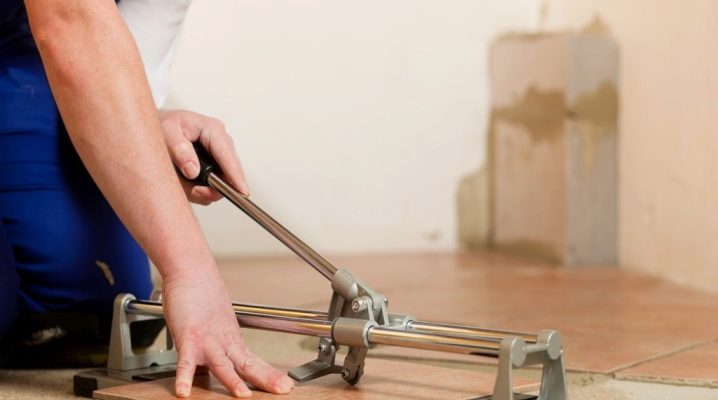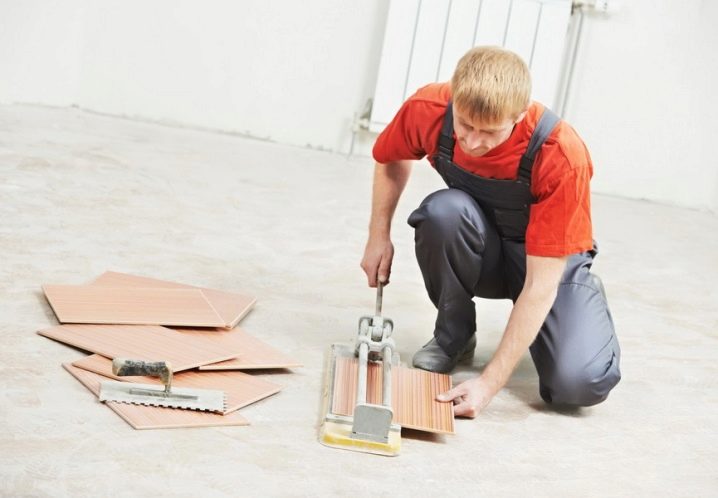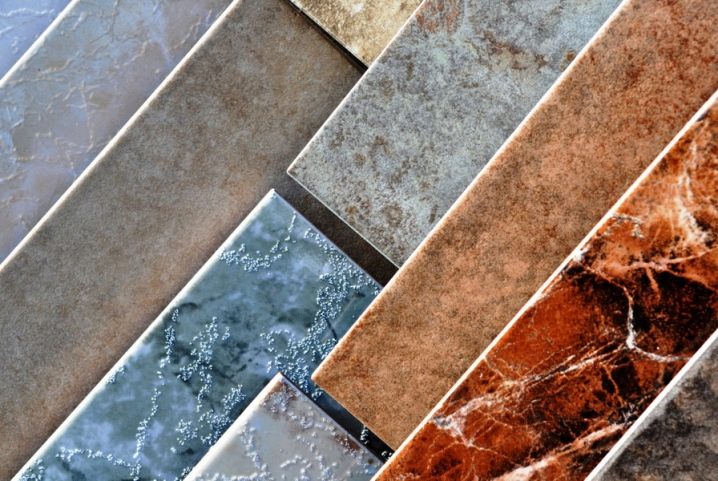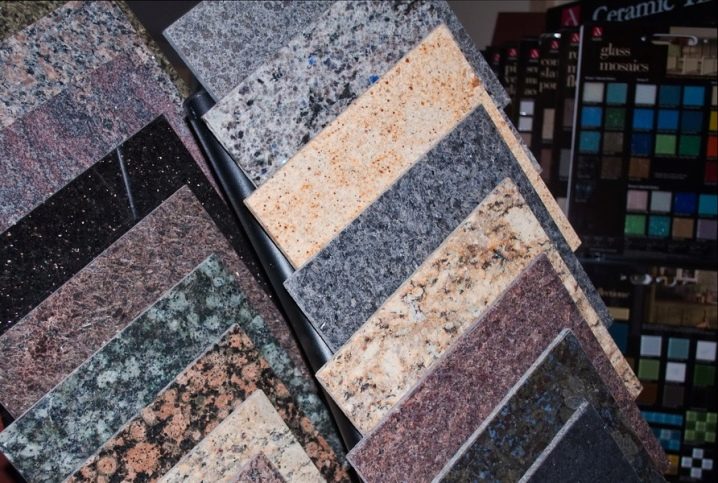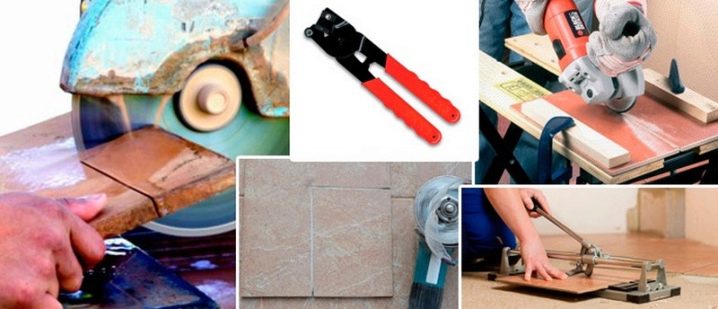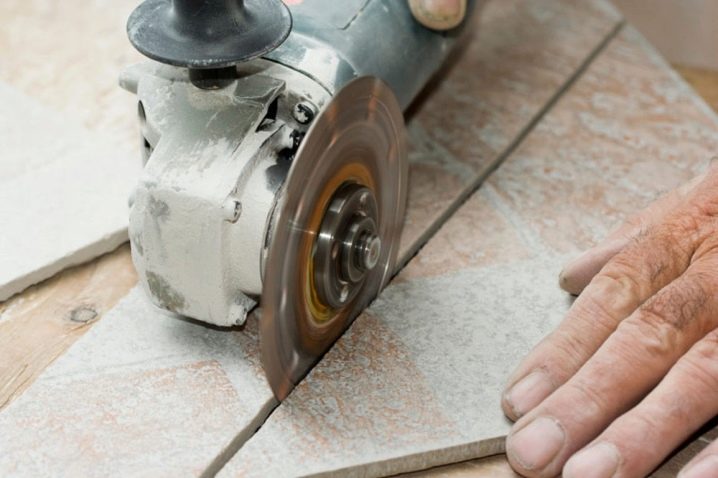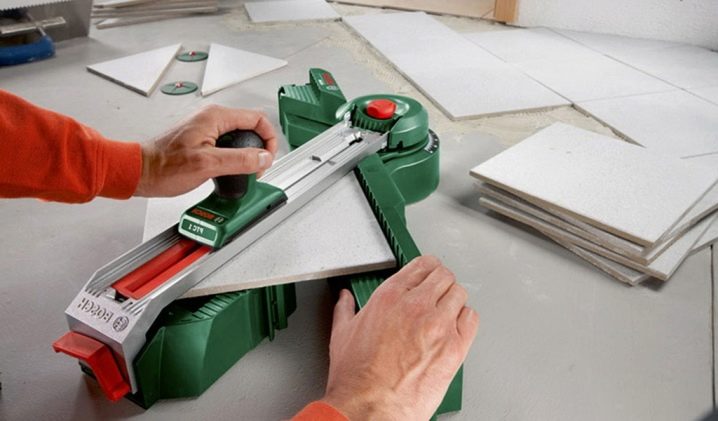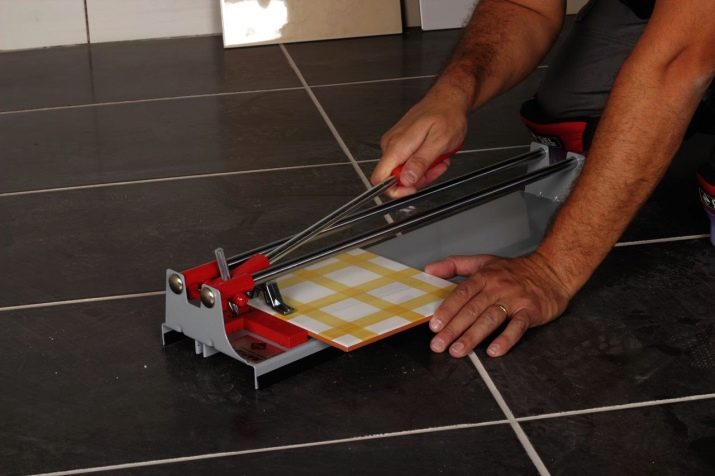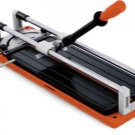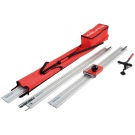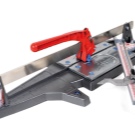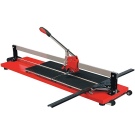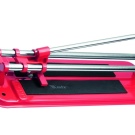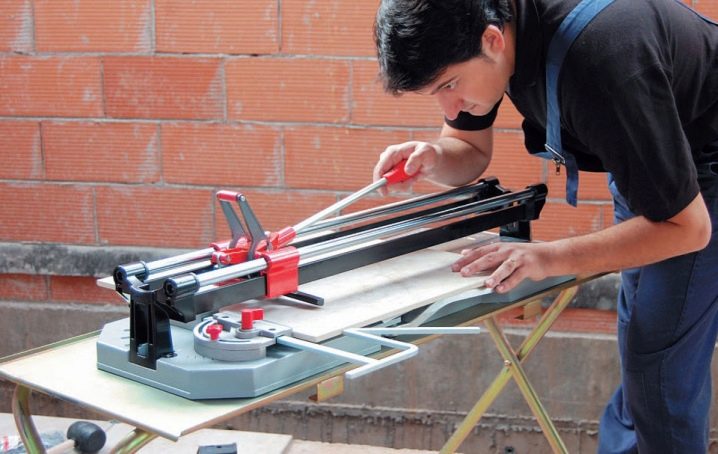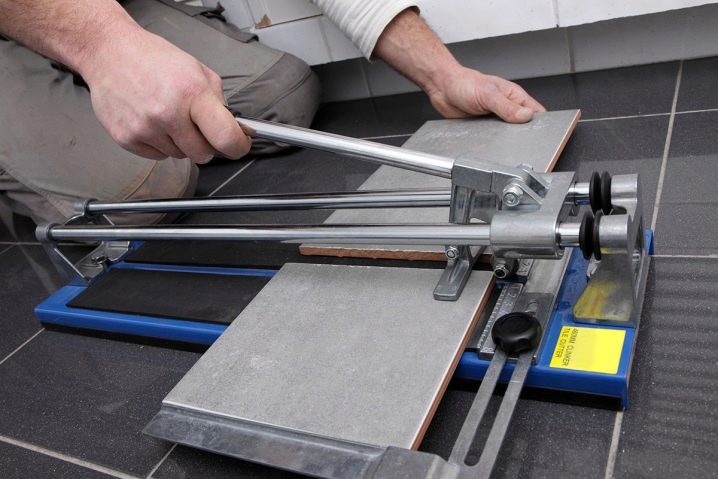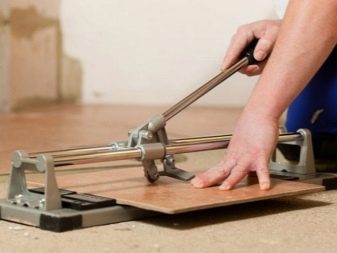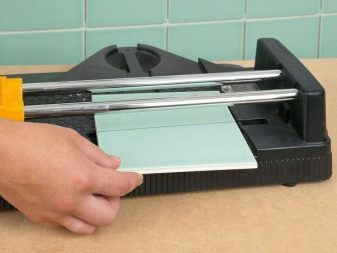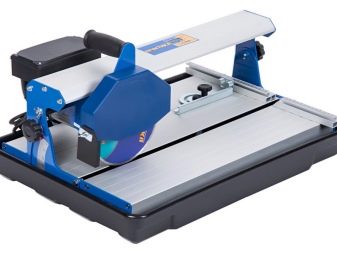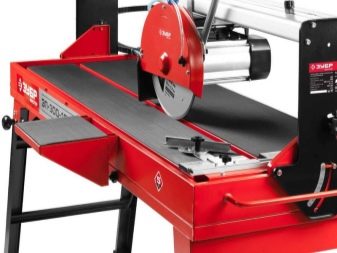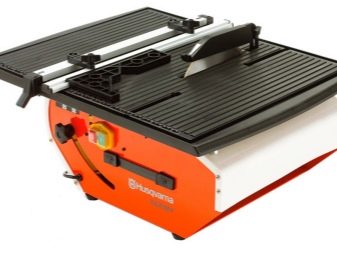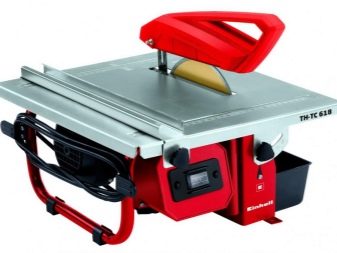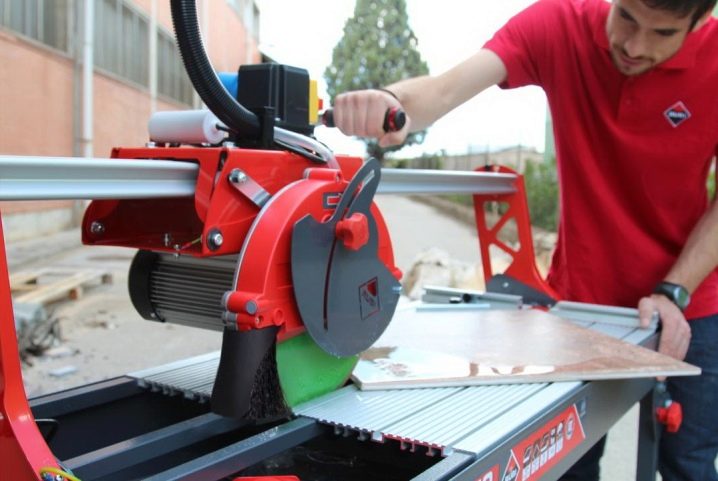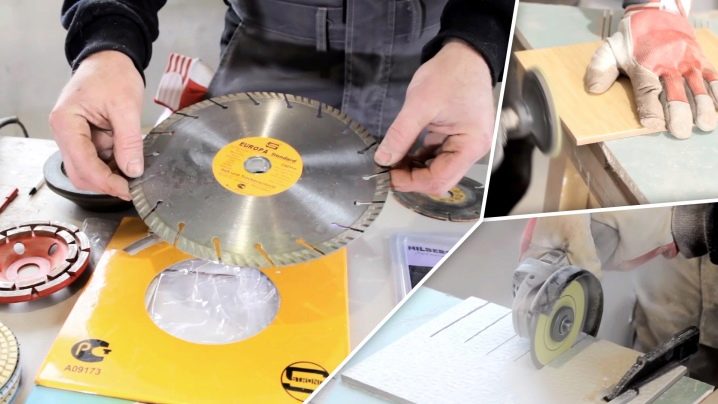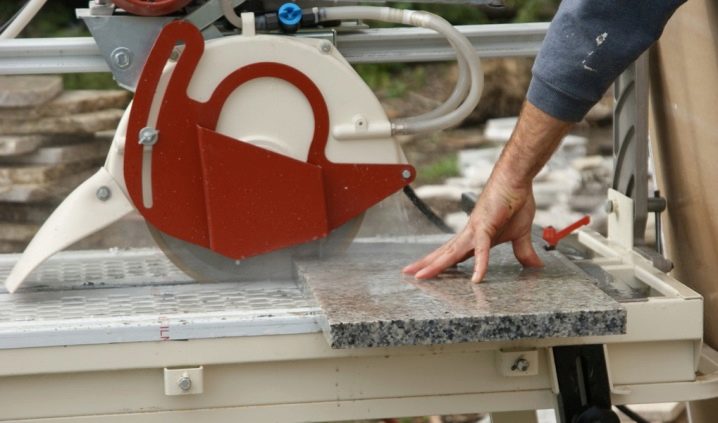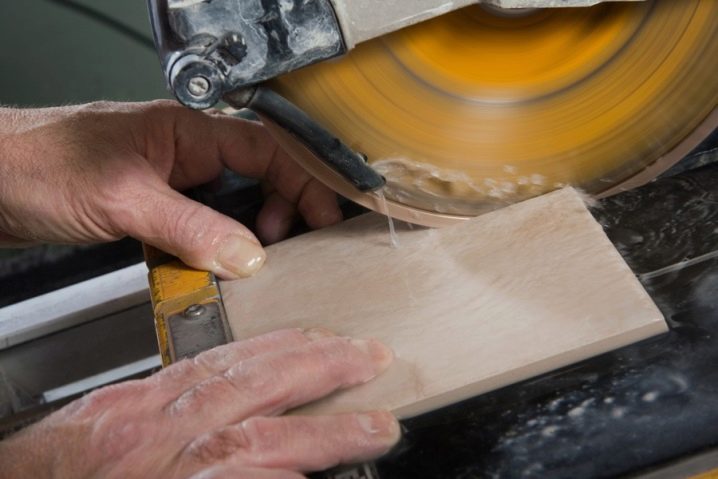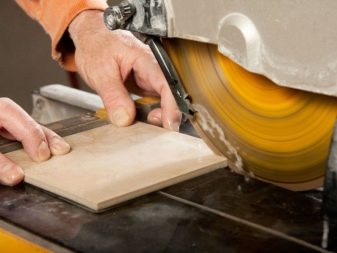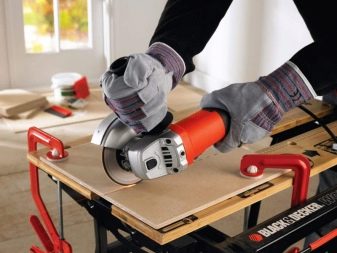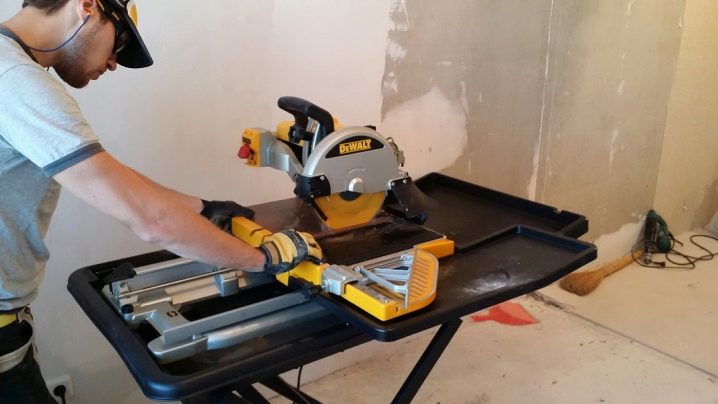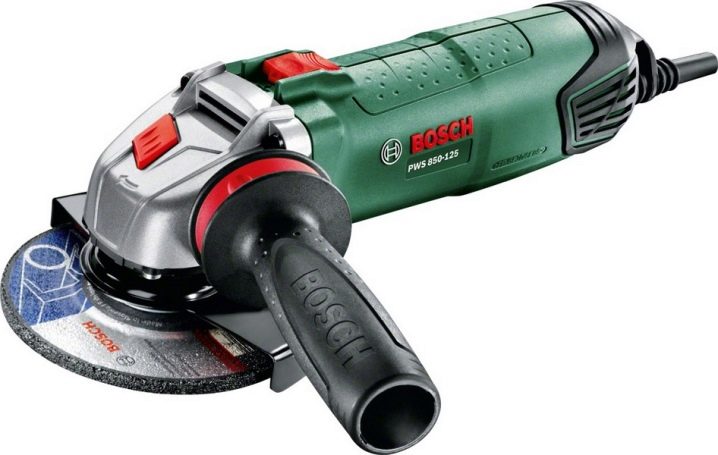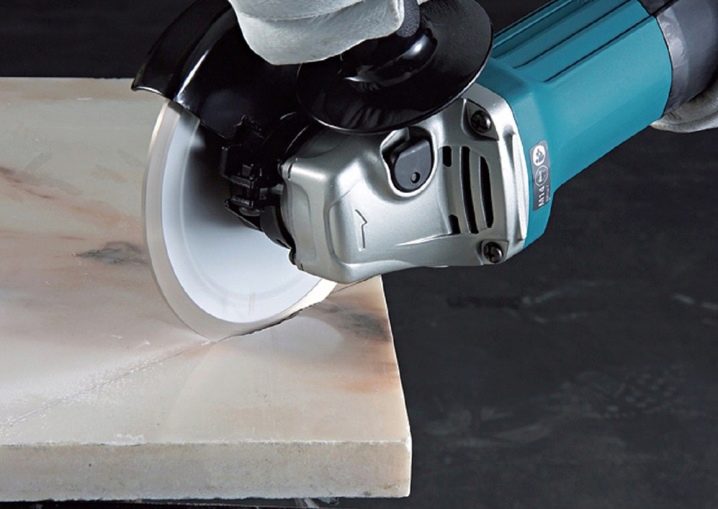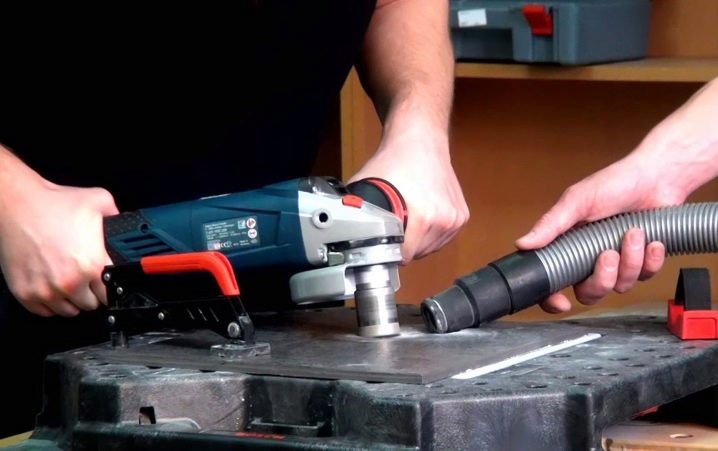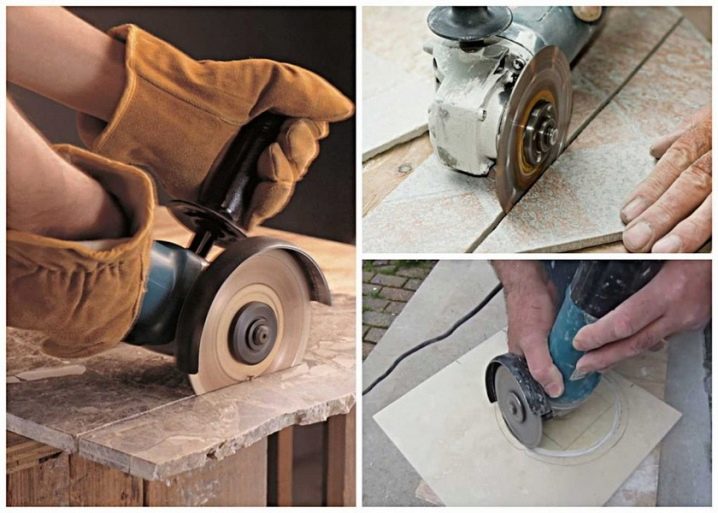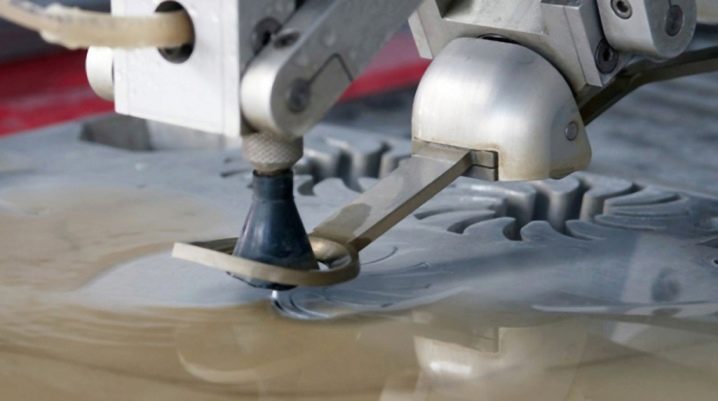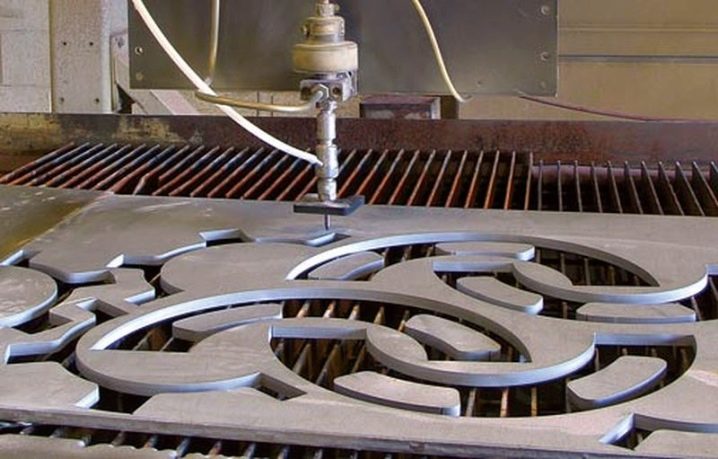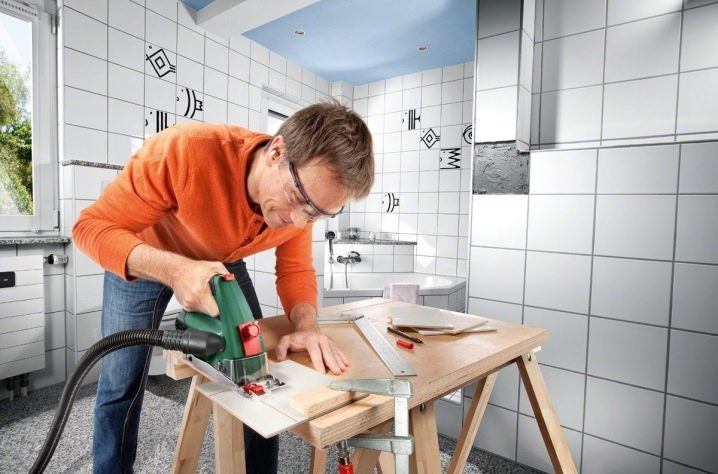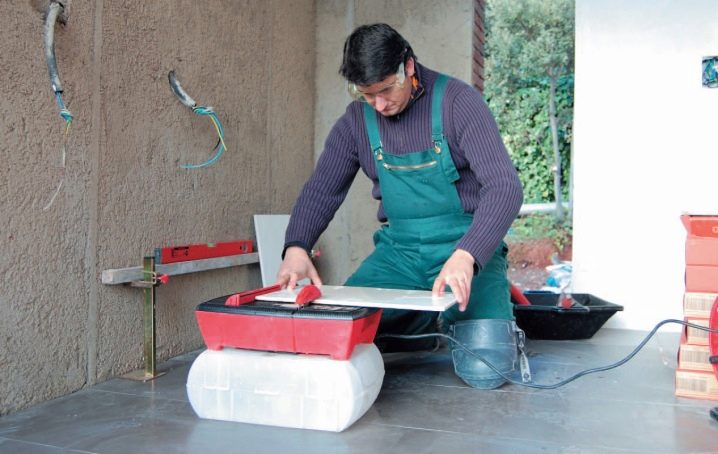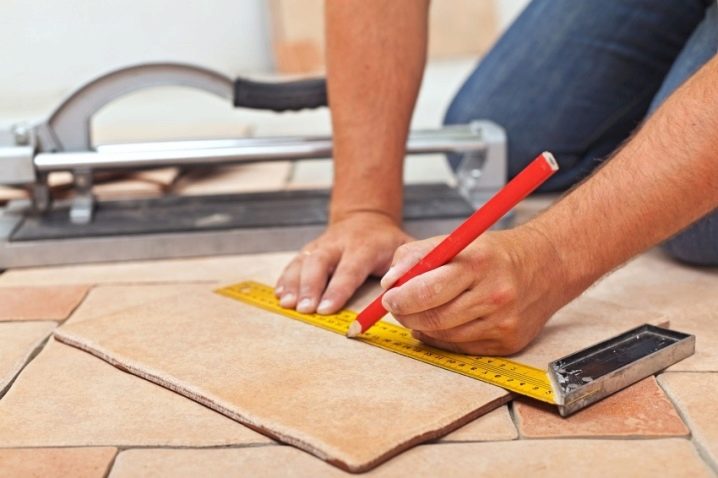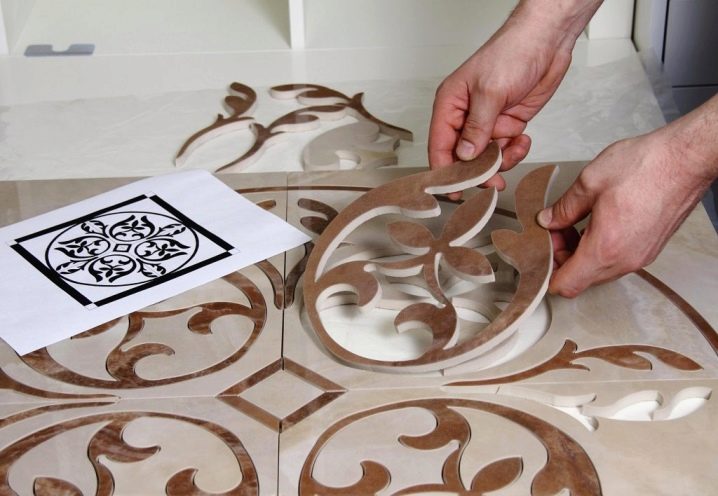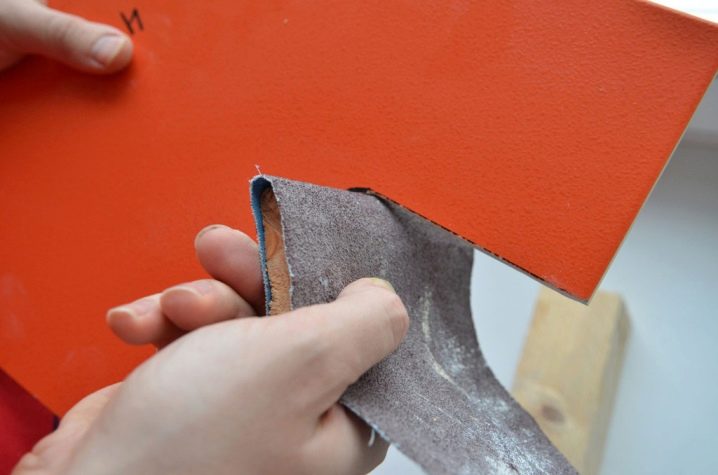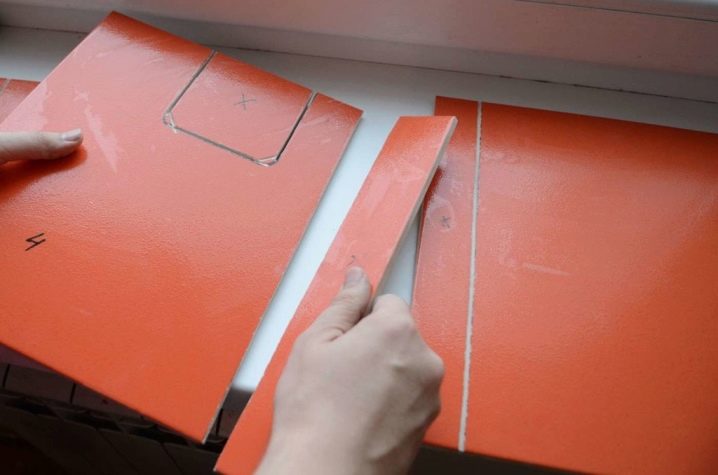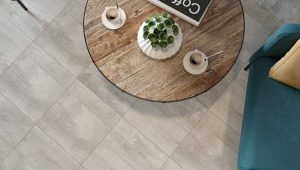The details of the process of cutting porcelain
Choosing a method for cutting porcelain stoneware is not an easy task. Some advise to choose laser cutting, others - manual or even cutting with a glass cutter.
There are also disputes as to whether the wet or dry method is better. Therefore, before starting work, it is necessary to study the nuances of each cutting method in order to choose the most suitable option for you.
Special features
The main feature of porcelain is that it is durable and hard. In terms of hardness, it can be compared to natural stone, although stoneware itself is not a natural material.
Porcelain tile is used for finishing both residential and non-residential premises. They revet the floors and walls, as well as the facades of buildings.
Another feature of porcelain is its environmental friendliness. It consists of materials that are completely harmless to human health. The next feature is its fire resistance.It is not exposed to fire, and does not fade from exposure to ultraviolet radiation. Porcelain tiles are divided into classes according to their durability, which also affect the quality characteristics of certain types of porcelain tiles.
Porcelain tile is a durable material that can be used for a century. During use, it practically does not crumble or scratch and is resistant to external damage.
But with all these advantages, it has one characteristic feature, which can be called a disadvantage - it is quite difficult to cut it with your own hands.
In domestic conditions, cutting of porcelain stoneware is possible only by resorting to the help of special devices and tools. Cutting porcelain is a necessary action in the process of its installation and installation. After all, it is impossible to choose plates that are ideally suited to the size, and which are clearly in size will fit into the surface of the floor or wall. Therefore, the extreme elements often have to be cut.
In addition, the feature of cutting is that it allows you to adjust the plates to your desired shape. Some models of porcelain stoneware do not undergo rectification.This procedure means factory trimming and giving the material equal edges.
Unrectified porcelain stoneware costs much lessSince there is a slight difference between plates, even in the same batch and in the same package.
By purchasing such porcelain tiles, you can save at times, but you will have to cut it. So you can remove the extra millimeters from the edges and make the slab perfectly flat to simplify installation.
With the help of some tools, you can not only carry out high-quality cutting of porcelain stoneware, but also even cut out unusual shapes, elements of an ornament that can be folded into a whole work of art.
So the flooring will look fascinating. But for this you should explore all options for cutting porcelain and the rules for the implementation of this process. It is also necessary to study all types of tools intended for cutting.
What can be used?
Mechanical manual tile cutter
This is the most popular tool that is great for cutting stoneware tiles. In general, such a tile cutter is designed for different materials in composition, but the models,designed for cutting porcelain stoneware, they are distinguished by high power and durability.
Mechanical tile cutter includes:
- bed frame;
- rail guides;
- drive roller;
- special feet.
The last element is designed for breaking tiles. The most popular model of such a tile cutter is a bearing machine with two guides.
Mechanical tile cutter can only be used to cut tiles in straight lines. With it you can not make curly cutting. The exclusive option is the L-shaped, but doing it manually is not so convenient.
In order to carry out such cutting of porcelain tile, it is necessary to carry out the following actions:
- First of all, the marking of the borders along which you will be cutting is performed.
- Then you need to install a porcelain tile slab on the tile cutting machine so that the marks are placed under certain elements: one - under the central part of the bed, the other - right under the cutting roller.
- Then you need to hold a roller from one markup to another. And should be carried out with uniform pressure. Should move pretty quickly.Moreover, it can be done only once, since the second cycle can lead to the appearance of defects and breaking the tile.
- After that, you need to press the paws on the place where the cut was made.
It is important that the movie was as sharp as possible. This is the only way to make perfectly smooth cutting without chipping. Before cutting the porcelain stoneware by hand, check how well the runners are lubricated. Otherwise, it will be much more difficult to use this device.
Manual tile cutter has a big minus - over time in the guides there is a backlash. This may lead to unevenness and chipping during cutting.. Some resort to tightening the bolts needed to fasten this system. But a strong tension can lead to irregularities on the edge of the cut. This porcelain stoneware can be used only if its cut is covered with wall tiles or hidden with the help of baseboards.
There are more expensive and high quality tile cutters. These include monorail models. They are quite large in size and therefore completely unsuitable for cutting porcelain stoneware at home.
Hand tools have only a few small advantages:
- With it, you can quickly cut the plates at home, while spending a minimum of force.
- You can save money, because you do not have to contact specialists for cutting.
But usually the edges, trimmed in this way, are not very even, so they have to be hidden. Some models of manual tile cutters have special patterns. Placing them on porcelain stoneware, you can even cut the tile and avoid wasting time on the markup.
Electric cutter
It is an electric machine, which generally has a similar type of work, like a mechanical tile cutter. But with it you can make a better cut. Besides it can be used for any type of porcelain stoneware, including for the thickest and dense elements. This will not affect the quality of work.
An electric tile cutter can neatly cut even the thinnest stoneware. It does not peel off the corners and leaves a perfectly even cut.. A mechanical tile cutter, on the contrary, is more likely to spoil such a tile than to cut it smoothly.
Electric tile cutter involves a longer cutting procedure, but the quality of the tile will be at its best. These devices have a high price.But it is due to the quality of cutting and external presentable work result.
Electric tile cutter includes in its set:
- camp (often its role is performed by the table);
- guides;
- diamond wheel, which acts as an element for cutting;
- electric motors;
- water system.
The special feature of cutting with the diamond wheel is that it spreads a large amount of dust from porcelain stoneware, therefore the device is equipped with an additional water system. It cools the cutting elements and prevents dust from scattering. This model has an automatic water supply system.
But water systems may vary. In some models, the system is a water tank in which the diamond wheel is partially immersed throughout the entire cutting process. Another option involves periodic wetting the circle with water with their own hands.
The fluid in this system must in any case be replaced during the cutting process.so that dirt does not accumulate and the diamond wheel does not deteriorate. In addition, the diamond wheel after work must be well processed and washed thoroughly, so that the cutting particles are not clogged.
Electric tile cutter may differ by type of cutting. It directly affects the way of working and has certain features:
- Some models of tile cutters suggest moving only the diamond wheel. At the same time the table remains completely motionless.
- Other models, on the contrary, suggest complete fixation of the cutting elements, and the tile in such a machine is moved using a rolling mill. But at the same time, the quality and speed of trimming does not change and still remains on top.
The electric tile cutter differs from the models of mechanical and manual type in that it provides for the figured cutting of porcelain tiles. But to make rounded shapes and winding lines, this machine can not. The mechanism is able to carry out only angular cutting.
In addition, such a device can cut tiles at an angle of 45 degrees. This is a more convenient way to control the cutting process.
Some prefer cutting porcelain using an angle grinder. It is an excellent solution in case you do not have the opportunity to purchase a special cutting tool for tile.
Bulgarian
It can be used to cut porcelain tiles of any shape and size. In addition, you can make additional grinding at an angle of 45 degrees. But for the grinder in this case, you should purchase a diamond disc with a smooth surface and without holes. This type of disc is suitable for cutting porcelain tiles. The big advantage of this type of cutting is the availability of this tool. Angle grinder is available in almost every home.
In addition, with the help of this device can be made figure cutting. Since the hand tool has high mobility, any pattern can be made practically. You only need to have the necessary level of skill. In addition, everyone who makes repairs in the house with their own hands, have the skills to use the angle grinder. Therefore, the procedure of cutting porcelain tile grinder does not deliver difficulties and will take quite a bit of time.
But this method has several disadvantages. Grinding of the grinder implies the emergence of strong noise and large amounts of dust. Cleaning after such cutting will be inevitable. In addition, the angle grinder is a dangerous tool.If you show carelessness or inattention, it can lead to injuries.
The disadvantage of some masters is also called the possibility of low-quality cutting. Since this machine is not specifically designed for such a process, the cut may not be of high quality, cutting will not be professional. If the Bulgarian is already old, then the possibility of chipping and the likelihood of small cracks on the texture of ceramic granite increase.. That is, the risk of spoiling the coating will be most likely.
But nevertheless at such cutting there is an additional grinding, therefore the sides are partially aligned. The trimming by the grinder is carried out only in cases when the porcelain tile in the places of the cut is hidden by other coatings or plinths.
In order to carry out such cutting, you must follow the instructions:
- First you need to outline the cutting line.
- When cutting, it will be necessary to move not strictly along the line, but retreating 2-3 mm upwards. This is due to the fact that the diamond wheel removes excess part of the plate.
- In the process of cutting the diamond wheel should be installed in the direction of movement of the whole mechanism.As a rule, the cutting elements have an arrow indicating the direction for installation.
- Movement during cutting should be only in one direction. Moving in different directions, you increase the likelihood of chipping and cracking. But thin plates of porcelain tile, on the contrary, need to be cut differently - smoothly moving back and forward. So you do not spoil and do not break the tile. The main thing is not to move too sharply.
- Before each cycle of porcelain stoneware trimming, it is necessary to further process the diamond wheel in order to ensure high-quality results. It is necessary to walk the cutting link several times on the brick. So you can remove excess dirt and accumulated dust from the surface of the diamond wheel.
Hydroabrasive
It differs in that it allows you to create complex drawings and patterns. So flooring will be more interesting and refined. Hydrocutting allows you to handle tiles in a variety of ways. If the design of your floor provides winding lines or drawings, then even a manual Bulgarian will not work for you. You can ruin all the plates with one wrong hand movement. In this way, for figure cutting it is necessary to use only hydro abrasive.
This tool is used only in workshops specially equipped for this process. This method of cutting porcelain stoneware involves cutting with a jet of water that is mixed with fine particles of abrasive. Moreover, the jet is thin, less than 0.5 millimeter. The jet is fed into the nozzle of the machine under great pressure.
Modern systems have a computerized control type that allows you to cut any, even complex pattern. Moreover, it is possible to cut porcelain stoneware even up to 20 cm thick.
Hydroabrasive cutting is done only by masters who know their work. The tool is quite expensive, but the result is always impressive, because you can even make a relief cut or create a panel.
A circular saw
Also often used at home. With it, you can easily cut porcelain in a straight line. But in this case it is impossible to use a gear disk. It must be replaced with a diamond type model. Cutting porcelain stoneware is thus similar to sawing wood. It is necessary to hold the plate and move it towards the cutting disc.
Cutting with a circular saw should only be done if you already have a markup.. Porcelain tiles should be pressed to the working surface of the tool with both hands.
Observing safety precautions and caution, you can even cut porcelain stoneware, but its edges will not be perfectly smooth.
Diamond Wire Jigsaw
It is possible to cut porcelain tile in house conditions by means of this device. So you can do not only the usual cutting, but also to cut interesting shapes and make sinuous lines. But for this you need to have some working skills and be able to properly manage this tool.
Also it is necessary to draw a contour of the cutout, on which you will subsequently move. When moving a jigsaw, you should carefully follow the direction of the wire. When moving the wire, be sure to blow dust from the tile surface.. So the cut line will always be open. The thread will cut through the porcelain tile more qualitatively, nothing will disturb it.
For better cutting tiles, you must first moisten. Especially pay attention to the edges of the tile, since it is there that chips appear most often.
Practical advice
At home, it is best to only cut porcelain at the edges.So, with the help of hand tools, you can cut off an extra centimeter, which interferes with styling, but figure cutting is a more complex process that will cause chipping and cracking even due to small errors. Any method of cutting implies a good fixation of the tile, no matter what tool you use.
When making markup, use a marker and a ruler. The markup must always be drawn on the front side of the tile, when cutting it must be on top. But in the process of cutting, always leave free space so that you can then correct the edges.
It is impossible to cut the entire porcelain tile by one marking, since the floor parameters are not always equally uniform and ideal.
To simplify your work, initially measure all the angles in the room. If they are exactly 90 degrees, then you can cut using a stencil on one marking. Now, if there are small deviations, each time it is necessary to make measurements manually and apply the markup to each element separately.
If the edge of the tile will not be hidden under the frieze or baseboard, it must be further processed, polished and leveled.During operation, the tile cutter should be installed only on a flat surface. With manual cutting methods, you should also get a flat table where you place all the cutting elements.
Cutting manually means that there will be at least 1 cm indent from the edge. Otherwise, you will not be able to make smooth lines, porcelain will begin to crumble and collapse. Therefore, it is important to indent with a margin so that the cutting is of higher quality.
If in the process of cutting you have unnecessary elements and corners on the cut, they can then be carefully removed with pliers. This way you can fix some errors.
To learn how to cut porcelain, see the next video.
